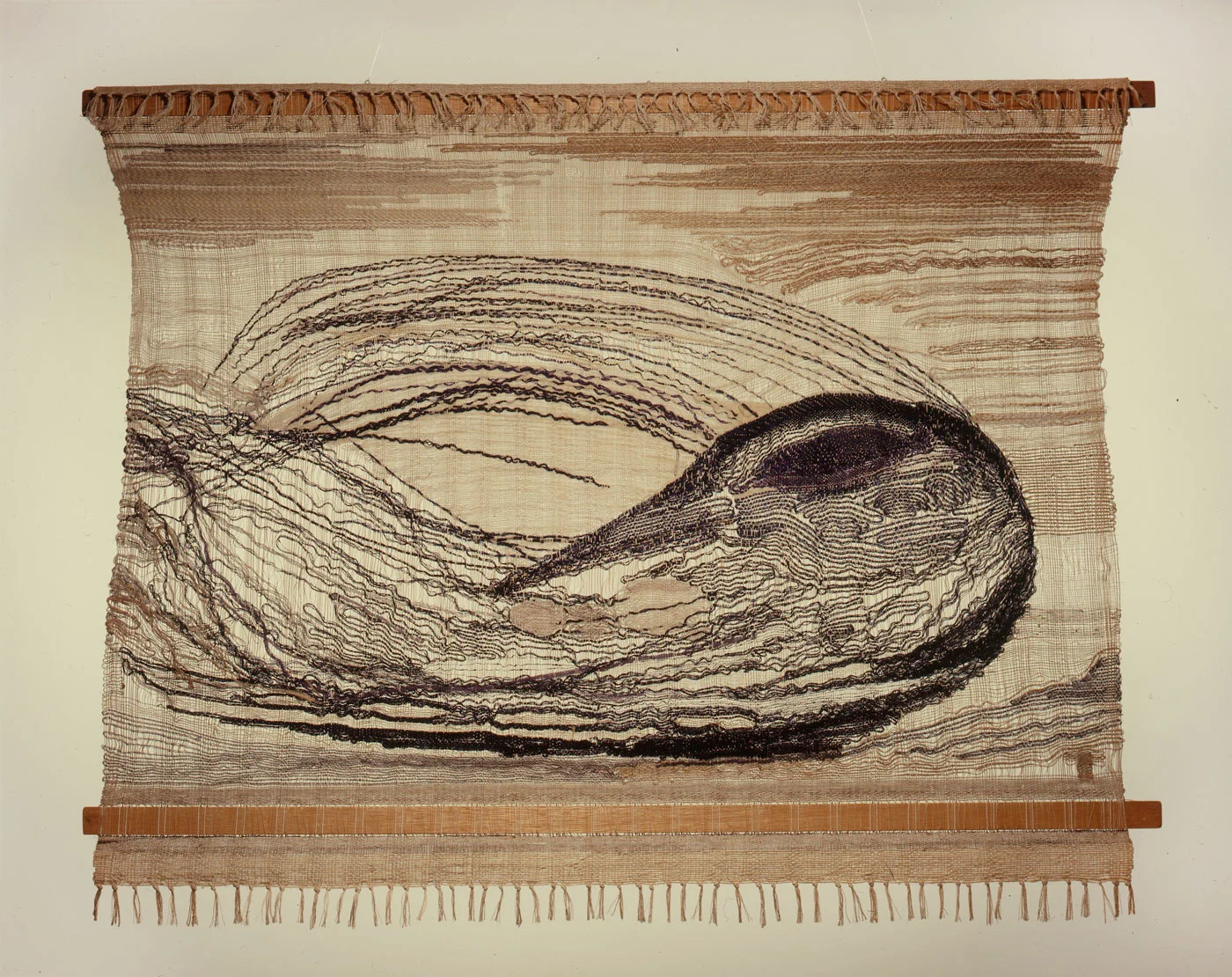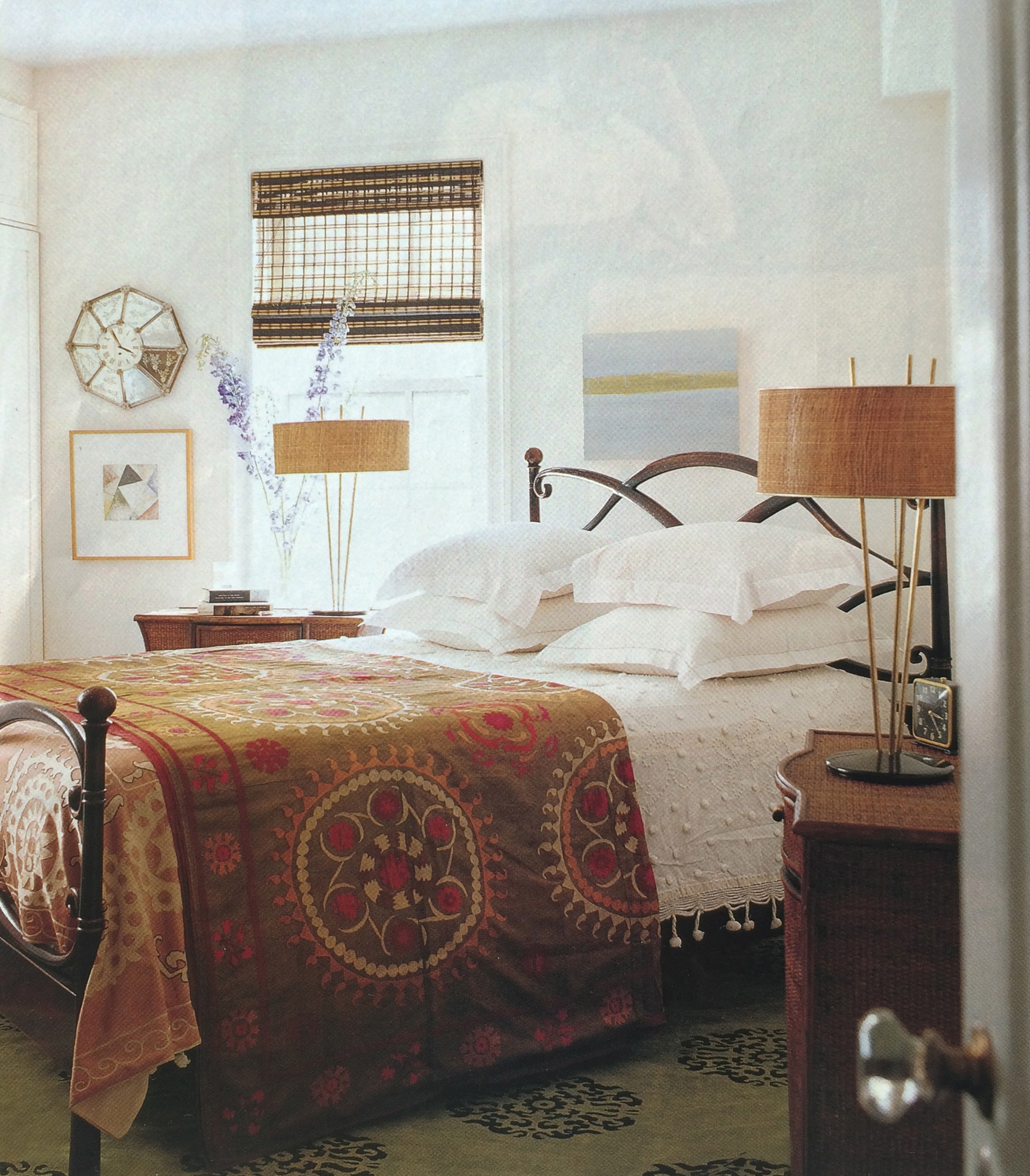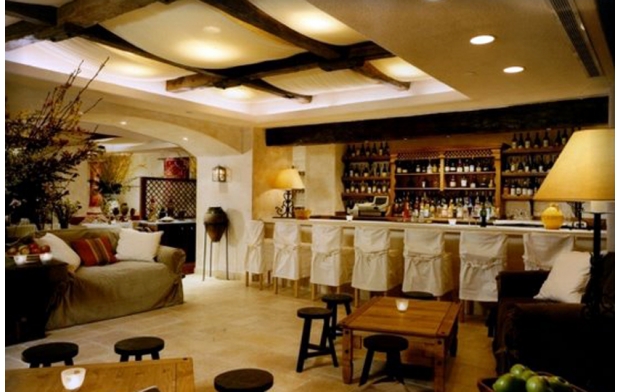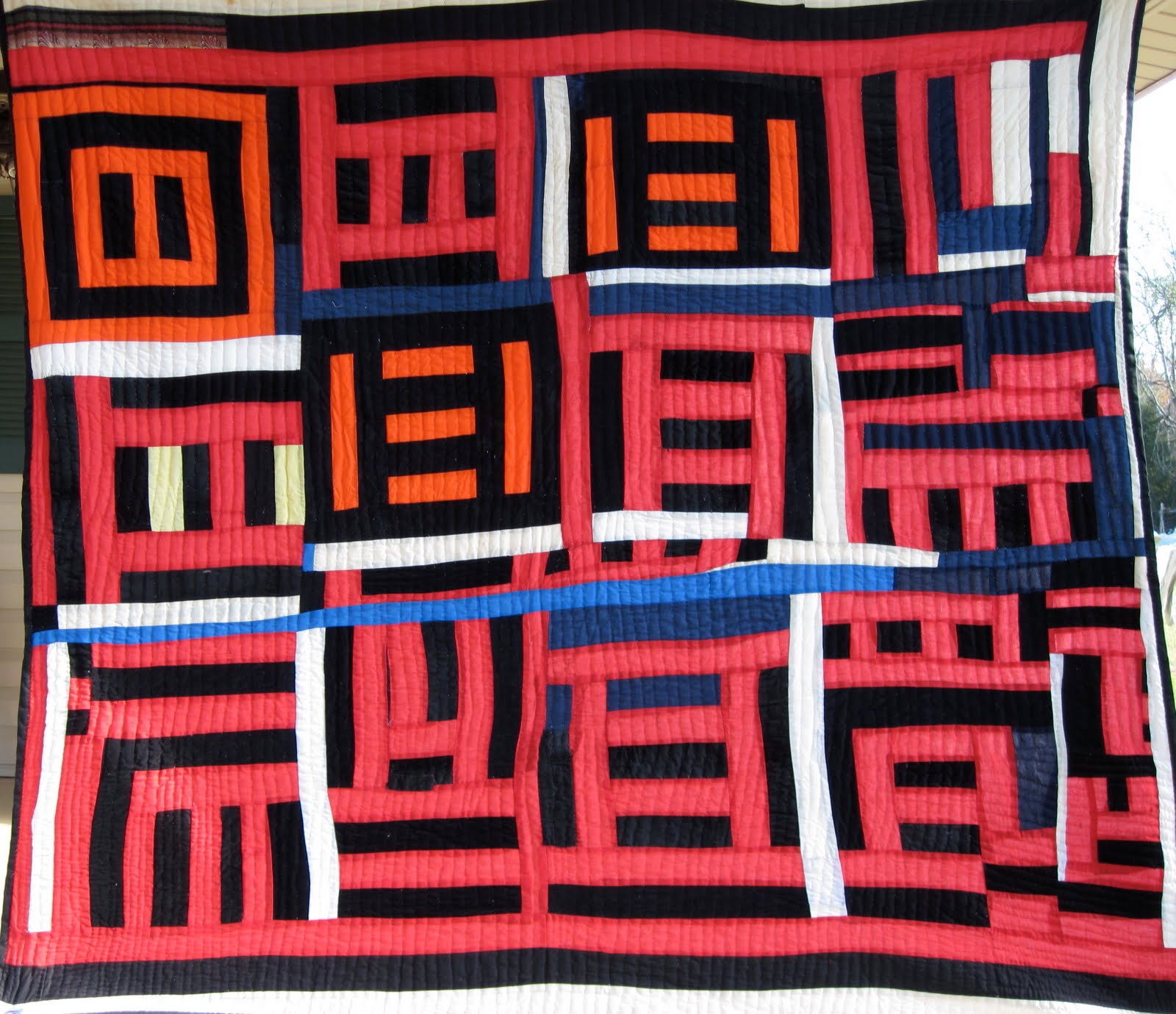








Lenore, Dorothy Liebes, samplers
material matters _
Lost and Found 1957
Lenore Tawney
Lenore, Dorothy Liebes, samplers
material matters _
Lost and Found 1957
Lenore Tawney
My dear friend LENORE TAWNEY warping her threads in preparation for weaving in the 1960’s.
Archives of American Art DOROTHY LIEBES And American Design ~Alexandra Griffith Winton
"We need the scale, the soft touch, the eye appeal and texture fabrics supplies to offset our building materials."
~ Dorothy Liebes, Mid-Century weaver SF, CA
Dorothy Liebes was responsible for introducing corporate America to mid-century textiles.
Textiles are Multi-Purpose
How important are textiles to a culture? Let's start with a little history.
In the United States, as late as the 1820’s and before the advent of public schools in the mid-1800’s, ‘infant’ schools taught young girls how to become productive and patient marriage material. “Samplers” embroidered by little fingers to display the skill of the stitching was seen as a virtue of womanhood. These embroidered samplers were a testament to the person’s endurance, and ability to accomplish finite tasks.
I bought these precursors to ‘real’ samplers some years ago at Brimfield Flea market. They were probably little girls' first attempts. Giving her tiny fingers a chance to gain proficiency. She would develop into more complicated patterns such as this. What a difference between a 6 year old's ability and a 10 year old's.
Millsent Connor, 10 years old, dated 1799 from Massachusetts. MET Museum, NY
Amelia Peck of the MET museum writes insightfully about this craft. http://www.metmuseum.org/toah/hd/need/hd_need.htm

Associated Artists, Wheeler, Goralnick, timeless textiles
Associated Artists
Park Avenue Armory Reception Room
Photo/John Hall
Associated Artists, Wheeler, Goralnick, timeless textiles
Associated Artists
Park Avenue Armory Reception Room
Photo/John Hall
Candace Wheeler began her professional career at age 52 when she joined Tiffany’s Associated Artists (from 1879-83). An example of this much venerated interior design firm’s work can be seen by the public at the PARK AVE ARMORY'S Reception + Silver Rooms.
Wheeler then went on to start her own design firm by the same name, Associated Artists. The firm did not only produced expensive custom projects, the majority of the pieces in the Met collection (36 in all) are printed and woven fabrics intended for the then growing middle-class market.
~ MET Bulletin 1995/6
floral patterns
Floral patterns in textiles are our way of bringing the outside world in. The world of plants which up until very recently we humans cohabited with for hundreds of thousands of years. A simple way to adapt nature to our geometric interiors is by fitting the shapes into patterns.
For this Appliqué Portiere - literally meaning door hanging, Candice Wheeler incorporates silk velvet on metallic cloth with silk embroidery. She uses gold thread in the tendril motif, and a stronger salmon and ochre color stitching plays against the salmon flower petals and lush green leaves.
TIFFANY TAPESTRY
The embroidery colors in the lilies shown below are set in relief on a soft silver background. Satin and velvet are textures that highlight an area because they pick up the light and reflect this light back to us.
As we move around these textiles, the light dances across the velvet pile background.
In the mid 90’s, after I’d read Candace Wheeler’s autobiography at multiple sittings in the 42 Street Library reading room, I then went to the MET to see her embroidery. In storage, I made an appointment for them to be brought out to view at the then newly completed Ratti Center. These pieces evoked a feeling of reverence.
textures tell a story
textures tell a story
textures tell a story
textures tell a story
Bringing texture into the room with soft goods is a wonderful way to offset the angularity and sometimes limited palette of modernism. Textiles not only add visual warmth, they also add acoustical ‘warmth’. They are multipurpose, playing a part in sound insulation, keeping heat within and cold drafts out. They also lend a sense of privacy and intimacy to a room. Who wouldn’t crave all of this in their home?
embroidered fabric for bedspread and pillows BARRY GORALNICK
Although we are often not aware of it, texture is a main component of our interior. Other elements include scale, volume and color. Volume is what is contained within four walls but can also refers to the atmosphere around each object and how they relate to each other - like a symphony playing within 4 walls. Inside this voluminous space, scale and proportion play their supporting roles. (link Ma)
Color imbues the interior walls, floor and ceiling while enhancing the molding, ledges, nooks, fireplace and furnishings. Texture is prominent as surface treatment in both soft and hard materials. Soft materials can consist of textiles, rugs or carpets, pillows, throws, upholstery fabric and curtains.
Surfaces that convey a texture are either smooth, course, bumpy, or soft. Juxtaposed with each other, various textures can compliment and highlight each other’s unique differences. When we look at texture we are looking at the skin of something, the surface top layer. Below the skin, the part that bubbles up from its depth to the surface is what gives the texture its appearance.

timeless textiles, matisse mention
Beds and bedrooms are about fabric. We envelope ourselves in them to get a good night’s sleep. It’s the room where we spend 1/3 of our lives! Just because our eyes are closed for the better half of the time we spend in this room, doesn’t mean we don’t experience it.
macII
timeless textiles, matisse mention
Beds and bedrooms are about fabric. We envelope ourselves in them to get a good night’s sleep. It’s the room where we spend 1/3 of our lives! Just because our eyes are closed for the better half of the time we spend in this room, doesn’t mean we don’t experience it.
macII
timeless textiles
Mixing cultures and eras along with the handcrafted with machine made gives us the feel of an eclectic, timeless lived-in look. This is the antithesis of the ‘magazine look’ that may work behind the camera but not for everyday living.
An inexpensive way to bring this look about is to pick up vintage pieces at yard sales, flee markets, antique shops, auction houses or if your budget won’t allow to fetch a similar look you might find a less expensive version online. But beware, sometimes the knock off might not be manufactured with materials and finishes worth keeping. My daughter quickly learned that MATERIAL MATTERS when she went shopping for mid-century modern online. Danish modern Arne Jacobson chairs bought for a song soon gave out to hairline cracks.
A little vintage here and a little modern there can transform a room. Vivian Tam, the clothing designer’s bedroom from an article by Wendy Goodman (upper left)
Not wanting to short circuit the brain with information overload, when mixing different styles, centuries, and cultures then keep cohesion in the room with color. We go back to our place to decompress, to let go of the worries and tensions of the day and recharge before we go out into the world to do it all again.
What makes this room a standout to be photographed is its cut velvet bedspread enveloped by cobalt blue walls.
textile influence
While visiting Nice, I was so impressed with Matisses collection of textiles and it’s direct link to his artwork, I wrote about it in our blog section Matisse in Nice

Rugs+Textiles, defining space -Shauna, Piping+Padding
Textured Rug
GROUNDPLANS
Rugs+Textiles, defining space -Shauna, Piping+Padding
Textured Rug
GROUNDPLANS
Rugs and textiles add not only warmth, they also add spots of color into a space as if we were adding a bouquet of flowers. But unlike fresh flowers, we can enjoy material all year round. Since rugs usually take up a major part of the room considering them in the initial planning of the design process is important. If they are an afterthought then they will look like it.
A rug defining space
William Spink floorplan
An easy way to pre-visualize the space is by making a floor plan. It shows the size and placement of the rug(s) with furniture laid out on top. We can include the color and design of the textiles with the furniture shapes to get a better understanding of how the finished space will look or we can create a “mood board” that consists of tear sheets of found material and pieces of our material and floorpan to flush out the look
(When I asked Bill what his inspiration was for the design is mentioned Sonia Delaney.)
The furniture plan and the seating plan has to harmonize with the placement of either various smaller rugs or one big area rug, or if one prefers wall-to-wall carpet. The way we would like people to interact gives us clues to how we compartmentalize a room and how build out its space.
William Spink Carpet design
STAIR CARPET for so many reasons
The stair carpet leads us from one level to the next. It acts as the transition for color and design, creates a sound barrier while protecting both young and old from hazardous falls. 3 in 1!
Kelly Wearstler (socialbliss.com)
piping and padding
PIPING on couches and chairs add fun accent colors to upholstery fabric, giving the couch a look of luxurious detail on modern and mid-century furniture.
Mark Zeff


PADDED WALLS
The padding in this bedroom softens the atmosphere.
(BNO Design, Photo/Antoine Bootz)
Padding in a lobby, office or restaurant make excellent sound barriers. They absorb sound whereas painted hard surfaces have sound bounce off the walls and act as an echo. Which would you rather have?

Fabric hanging from the ceiling
felt fixture
SWIRL
Fabric hanging from the ceiling
felt fixture
SWIRL
CEILING TREATMENTS - fabric hanging from the ceiling
Restaurants have their fair share of noise. The way to absorb it best is with fabric. Either pad the walls as done above, or with acoustical tile. But if you don’t like the look of acoustical tile, even hanging napkins will do.
After the opening of a café designed by the renowned Italian designer, Paola Navone, the noise level was too much. As a way to rectify this, post opening, practically minded Navone hung multiple napkins from the ceiling to absorb the sound.
Greek Restaurants in NYC hangs ceiling fabric for ambience, to dampen the noise and soften the lighting. Another 3 in 1.

John Miles for Heals Dept store O
BIG O’s are BIG wOw's
_
John Miles for Heal’s department store, England
John Miles for Heals Dept store O
BIG O’s are BIG wOw's
_
John Miles for Heal’s department store, England
Window, B+W, Pine Cabin, Greek
WINDOW TREATMENT
Window, B+W, Pine Cabin, Greek
WINDOW TREATMENT
If the curtains or other window treatments shades the sunlight, secures privacy and gives a pleasing glow or color contrast then they have fulfilled many purposes.
Curtains in window of Elegant Fabrics Shop, in the fashion district NYC
Another version of the ever popular B+W kitchen because food is the color. Black & white lets colors shine. The circular pattern on the curtains is a respite from the angularity of the cabinets and appliances. This roundness mimics the shape of the chandelier and tile floor. An added bonus is seeing this round shape reflected in the glass cabinets.
B+W Kitchen
FABRIC I(NFLUENCE)S OUR ENVIRONMENT
AT LA MAISON D’UZES upholstered headboard are the pop color. The geometric textile on the bench counterbalances the soft tufting of the headboard. The room is rich without feeling saturated.
LA MAISON D’UZES
White sheets and curtains dress up and brighten this pine paneled room which would otherwise look heavy and cabin-like.
Pine and white organdy
On a Greek Island is a house filled with beauty one bedroom after the next. Textiles play their part to bring in simple elegance.

Quilts
Denise Schmitt
Quilting her Magic
Quilts
Denise Schmitt
Quilting her Magic
A couple of beautiful contemporary twists on the quilt: Denise Schmitt quilted her magic and the Gee’s Bend ladies play a jazz symphony on cloth.

Jun-ichi Arai
Among all the cultural heritages, there is nothing more abundant than [textile] fabric. Nothing can exceed its warmth. Textile is gentle, and does not ‘speak’ too much.
~Jun-ichi Arai
Jun-ichi Arai
Among all the cultural heritages, there is nothing more abundant than [textile] fabric. Nothing can exceed its warmth. Textile is gentle, and does not ‘speak’ too much.
~Jun-ichi Arai































